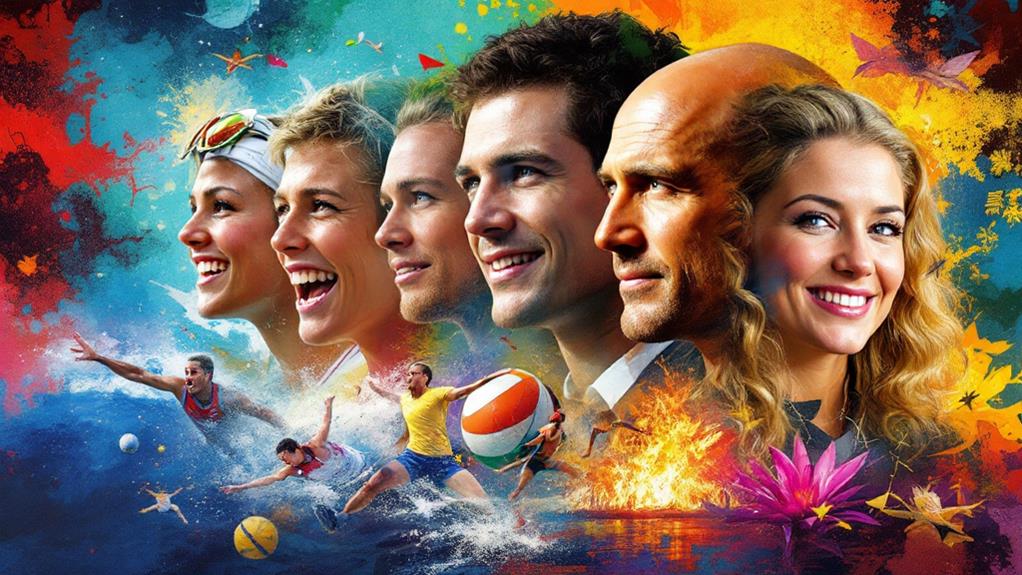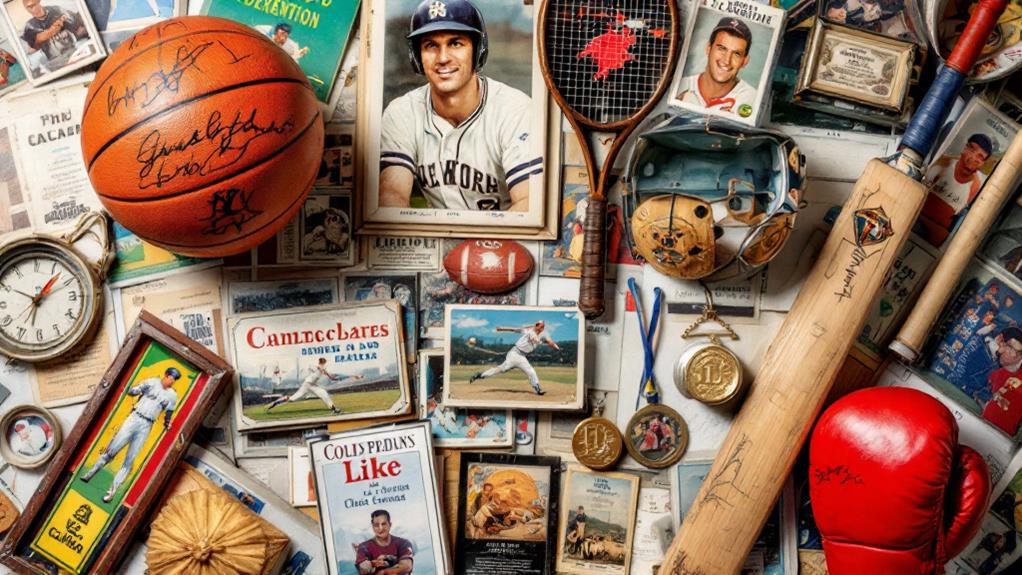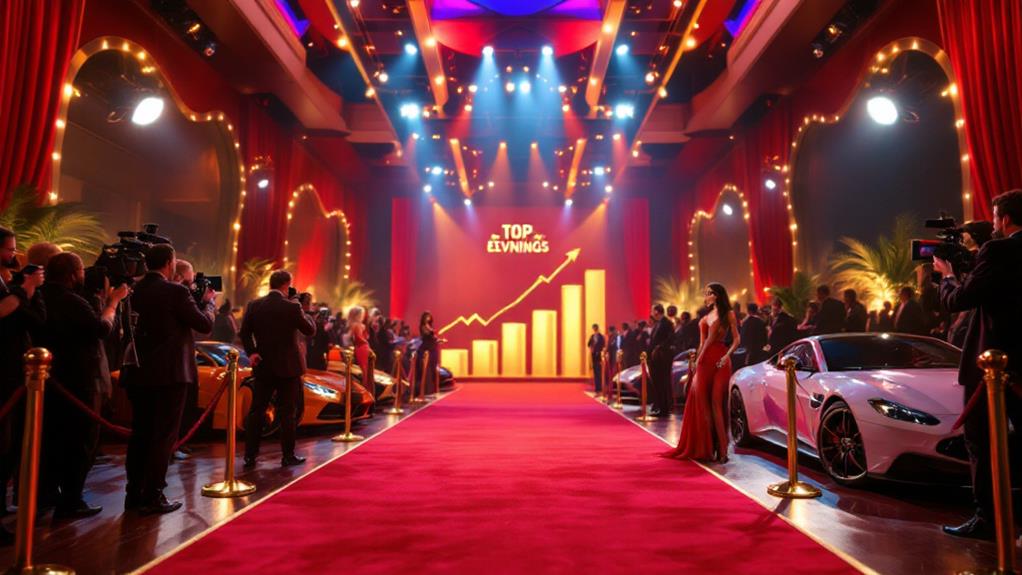Highest Paid Athletes in 1990: Legends Who Shaped Sports History
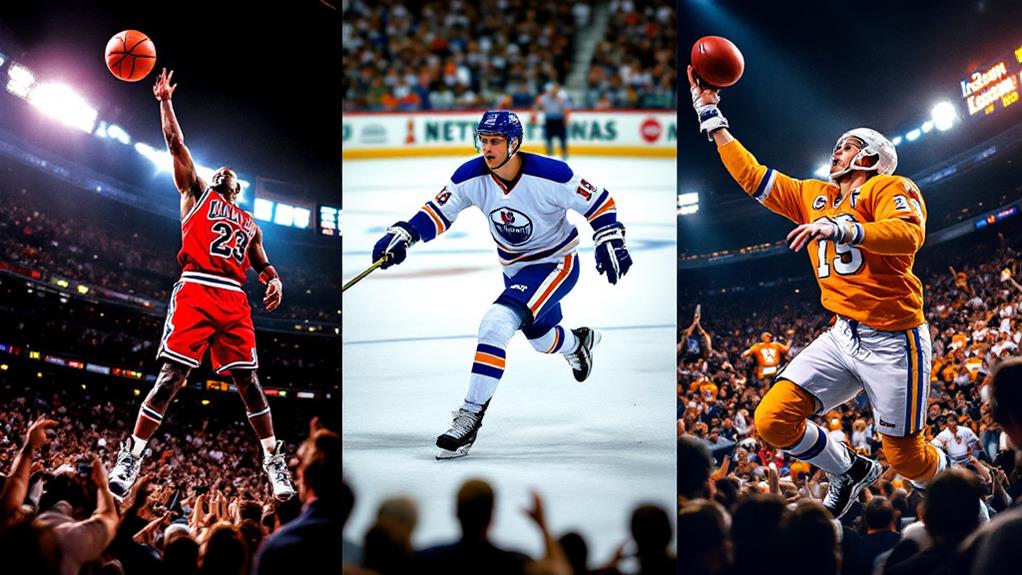
Imagine it's 1990 and you're witnessing legends like Michael Jordan and Mike Tyson not just leading in sports but reshaping financial landscapes. Jordan, with a salary of $3.6 million and $6 million from endorsements, transformed sports marketing with the Air Jordan brand. Tyson, a force in boxing, earned $28 million, showcasing unmatched marketability. Evander Holyfield's epic bouts and endorsements also contributed to his success, while Arnold Palmer and Wayne Gretzky's influence extended beyond their respective arenas. George Foreman's comeback further exemplified adaptability. These figures didn't just play; they paved ways for future stars to shine. There's more to uncover.
Michael Jordan's Financial Impact
Few athletes have reshaped the financial landscape of sports quite like Michael Jordan. In 1990, as the highest-paid player in the NBA, he earned approximately $3.6 million in salary from the Chicago Bulls. But it wasn't just his on-court prowess that lined his pockets. Jordan's endorsement deals, particularly with Nike, added an estimated $6 million to his earnings that year, catapulting him to the forefront of sports marketing.
You see, Jordan wasn't just playing basketball; he was redefining what it meant to be a global sports icon. The creation of the Air Jordan brand didn't just revolutionize athlete endorsements—it set a new standard. By the end of the 1990s, his total earnings were astonishing, with salary and endorsements during the 1996-97 season reaching about $30 million. This financial impact extended far beyond his personal wealth, influencing how basketball players—and athletes in general—approached branding and endorsement deals.
Jordan's success demonstrated the power of leveraging one's brand, setting a precedent for future athletes. He didn't just change the game; he changed the business of sports, forever altering the landscape of sports marketing.
Mike Tyson's Earnings and Influence
In 1990, Mike Tyson stood as one of the highest-paid athletes, raking in around $28 million from boxing matches and endorsements. As the youngest heavyweight champion in history at period 20, Tyson's marketability soared, making him a magnet for lucrative contracts. His reputation as a ferocious boxer wasn't just about his skills in the ring; it translated into enormous drawing power that captivated audiences worldwide.
Consider his 1990 fight against James Tillis, which generated over $6 million in gate receipts. This fight exemplified how Tyson's presence could fill arenas and drive up sports salaries to unprecedented levels. His marketability wasn't limited to just his fights; endorsements played a significant role in bolstering his earnings, making Tyson a household name beyond boxing circles.
Tyson's lucrative contracts, such as the record-setting $30 million for his fight against Razor Ruddock, marked a peak in sports salaries during that epoch. His career earnings eventually surpassed $400 million, underscoring his dominance in boxing and his influence on sports history. When you think of highest-paid athletes of the 1990s, Tyson's name is synonymous with financial success and enduring legacy.
Evander Holyfield's Prize Money
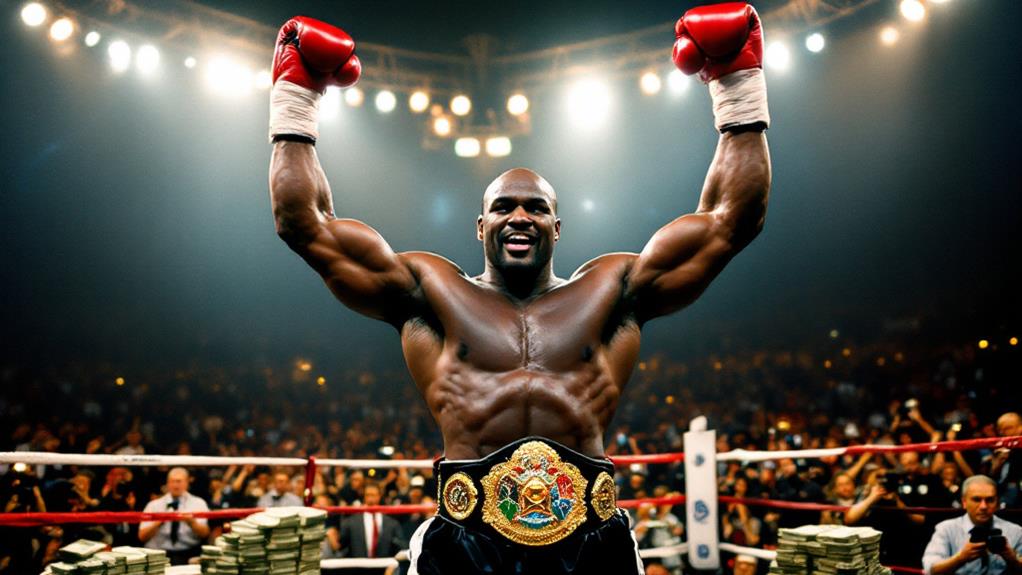
Many remember Evander Holyfield not only for his prowess in the ring but also for the staggering prize money he amassed throughout his career. As one of the highest-paid athletes of the 1990s, Holyfield's boxing career was a demonstration of his financial success and enduring legacy. You might be intrigued to learn that his earnings amounted to an astonishing $250 million. This figure was bolstered by his epic battles, including his 1993 fight against Riddick Bowe, where he pocketed a cool $30 million.
Holyfield's marketability soared when he became the initial four-time world heavyweight champion, enhancing his appeal not just in the ring but also in the world of endorsement deals. Brands like Coca-Cola recognized his star power, adding considerably to his earnings. His 1997 bout with Mike Tyson, infamously known as the "Bite Fight," also netted him another $30 million, proving his consistent draw in the sport.
- $250 million in career earnings
- $30 million from the 1993 Riddick Bowe fight
- Endorsement deals with top brands
Evander Holyfield's financial triumphs in boxing history are as remarkable as his victories in the ring.
Arnold Palmer's Endorsement Power
Arnold Palmer wasn't just a golfing legend; he was a trailblazer in the world of athlete endorsements. With a net worth of $140 million, Palmer's influence extended far beyond the fairways. His charismatic personality and strategic partnerships with brands like Rolex and Pennzoil made him one of the highest-paid athletes of the 1990s. Unlike others of his time, Palmer understood the power of athlete endorsements, using his marketability to secure some of the initial lucrative endorsement deals in sports history.
You can see how Palmer's success on the golf course translated into massive off-the-course earnings. His ability to connect with fans and corporate partners alike set a standard for what was possible in athlete endorsements. By leveraging his engaging personality, Palmer transformed into a household name, illustrating the potential for athletes to earn considerably more through sponsorships than their sports contracts. His strategic partnerships weren't just about immediate financial gain; they were about building a legacy.
Palmer's approach paved the way for future athletes to cultivate their brands and engage in lucrative partnerships across different industries. His impact on sports history is undeniable, showing how charisma combined with marketability can redefine an athlete's career.
Wayne Gretzky's Hockey Legacy
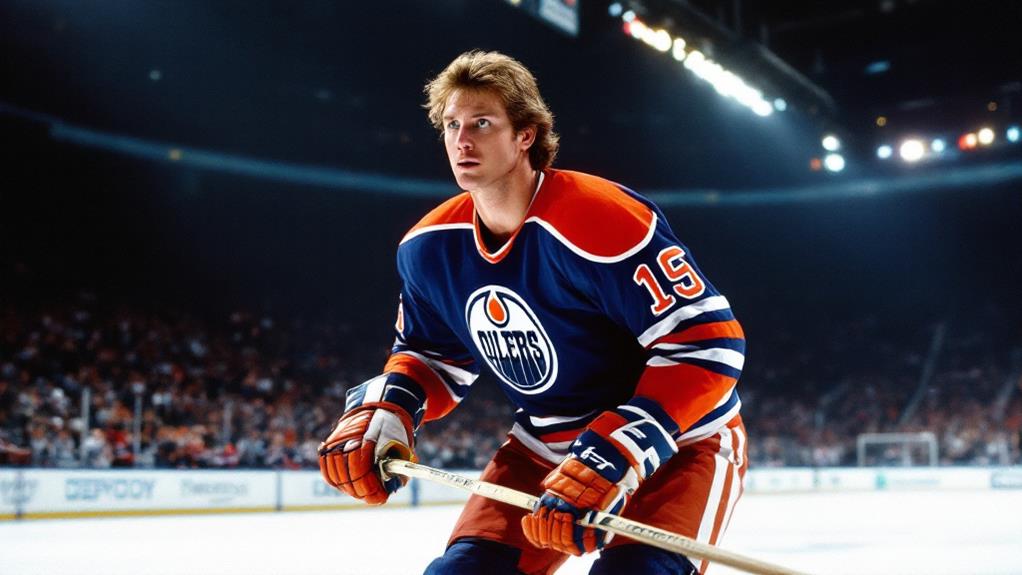
As you investigate Wayne Gretzky's hockey legacy, you'll find a player whose impact on the sport is unmatched. Widely regarded as the greatest hockey player of all time, Gretzky transformed ice hockey in ways that forever changed sports history. His tenure with the Los Angeles Kings made him one of the highest-paid athletes of 1990, earning a remarkable $3 million. This figure mirrored his unmatched talent and influence on the ice.
Consider these astounding accomplishments:
- NHL Records: Gretzky retired holding 61 NHL records, including a staggering 2,857 career points, comprised of 894 goals and 1,963 assists.
- Stanley Cups: He secured four Stanley Cups with the Edmonton Oilers, demonstrating his dominance in the game.
- Most Valuable Player: Gretzky was named the league's Most Valuable Player an unprecedented nine consecutive times from 1980 to 1987.
Beyond his on-ice achievements, Gretzky became a global ambassador for hockey. His move to the Los Angeles Kings greatly enhanced the sport's popularity in the United States, expanding its fan base. Wayne Gretzky didn't just play hockey; he redefined it, leaving an indelible mark on the game's history.
George Foreman's Comeback Success
Inspiration can be drawn from George Foreman's incredible odyssey of reinvention and resilience. At 45, Foreman made a legendary comeback, becoming the oldest heavyweight champion in boxing history after defeating Michael Moorer in 1994. This victory didn't just mark a monumental moment in his boxing career; it also brought substantial financial rewards. With a $12.5 million purse, Foreman's earnings skyrocketed, positioning him among the highest-paid athletes of the decade.
But Foreman's expedition didn't stop in the ring. His iconic grill endorsement deal propelled his net worth to new heights, amassing over $200 million from endorsements alone. This business success made Foreman a household name, proving that athletes can reinvent themselves and thrive post-retirement. His story is a reflection of the power of perseverance and adaptability, providing inspiration for those who might feel limited by maturity or previous setbacks.
George Foreman's comeback and subsequent endorsement success underscore the potential for financial and personal growth beyond one's initial career. His tale of triumph offers a blueprint for overcoming adversity and achieving greatness, no matter the phase of life.


